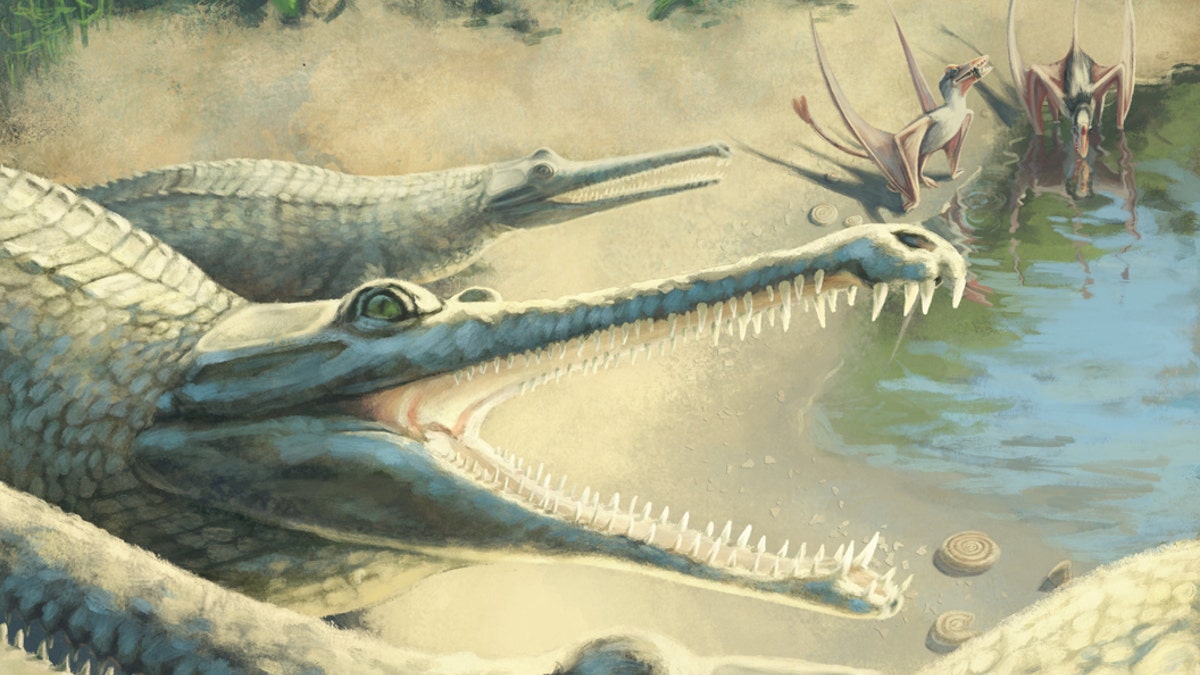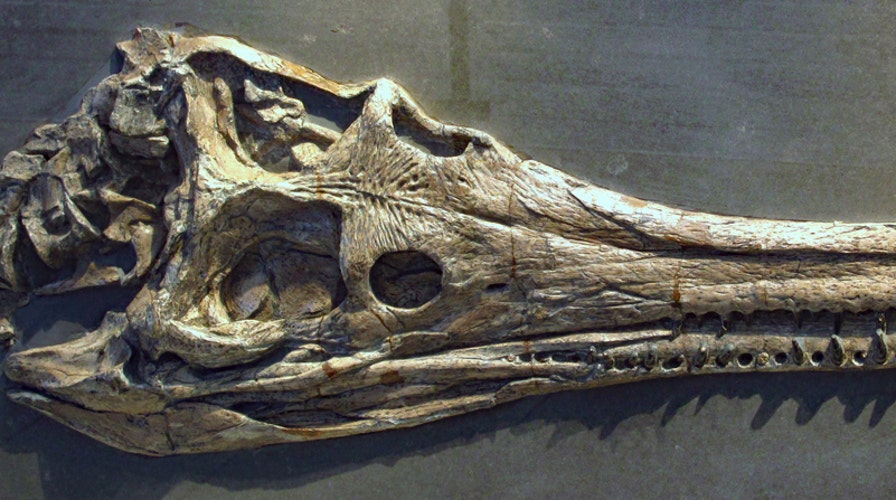Fox News Flash top headlines for Sept. 16
Fox News Flash top headlines for Sept. 16 are here. Check out what's clicking on Foxnews.com
The identity of a massive prehistoric crocodile that lived 180 million years ago has finally been determined, nearly 250 years after its fossils were first discovered.
Known as Mystriosaurus laurillardi, the ancient reptile, which could reach nearly 15 feet in length, was first discovered in a Bavarian town in the 1770s. However, it was not properly identified until now because it was thought to be a member of a similar species, Steneosaurus bollensis.
"Mystriosaurus looked like a gharial but it had a shorter snout with its nasal opening facing forwards, whereas in nearly all other fossil and living crocodiles the nasal opening is placed on top of the snout," the study's lead author, Sven Sachs, said in a statement.

The predator’s skull was found in a Bavarian town in the 1770s but experts have now discovered it was a Mystriosaurus laurillardi. (Credit: SWNS)
FOSSILS OF 'SQUAWKZILLA,' 19 MILLION-YEAR-OLD CANNIBAL PARROT, FOUND IN NEW ZEALAND
The research has been published in the scientific journal Acta Palaeontologica Polonica.
M. laurillardi flourished during the Jurassic period and resided in the warm seas of the Earth during that period, along with several other large marine reptiles, including ichthyosaurs, according to researchers.
In April 2018, the jawbone fossil of a 205-million-year-old ichthyosaur was discovered in southwestern England, making it "one of the largest animals to ever live" — nearly the size of a blue whale.
The scientists added that the discovery of the fossil, in Germany and the U.K., where another skull was found in Yorkshire in the 1800s, highlighted that it could swim between islands, similar to its modern-day relative, saltwater crocodiles.

The now-extinct species, which lived in tropical waters during the Jurassic period, was more than 13 feet long. It had a long snout and pointed teeth and preyed on fish. (Credit: SWNS)
One of the study's co-authors, Dr. Mark Young, of the University of Edinburgh, said that uncovering the history of reptiles like Mystriosaurus will better aid researchers in understanding how diverse crocodiles were during the Jurassic.
"Unravelling the complex history and anatomy of fossils like Mystriosaurus is necessary if we are to understand the diversification of crocodiles during the Jurassic," Young added in the statement. "Their rapid increase in biodiversity between 200 and 180 million years ago is still poorly understood."

